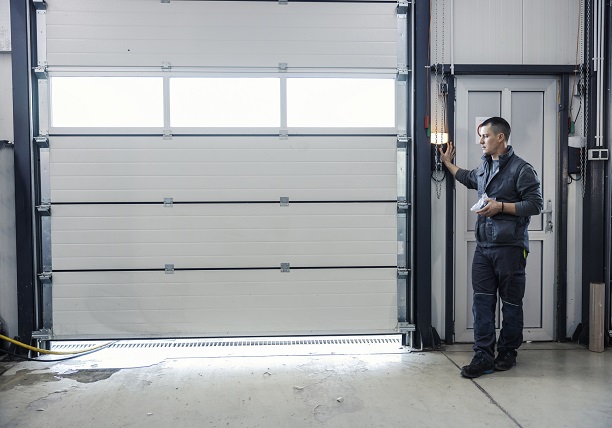A broken garage door spring can throw a wrench into your daily routine. Most garage doors rely on springs to lift and lower the heavy door, making them a critical component of the system. But when a spring breaks, you’ll not only be left with a malfunctioning door but also the question of repair costs. How much should you expect to pay, and what factors influence the price? This guide will break it all down, helping you better understand garage door spring repair expenses and make the best decision for your situation.
The Role of Garage Door Springs
Garage door springs are responsible for counterbalancing the door’s weight. Without them, manually lifting the door (which can weigh upwards of 200 pounds) becomes a Herculean task. Springs allow the door to open and close smoothly while minimizing the load on your garage door opener.
There are typically two types of garage door springs used in residential systems, and their function is the same to bear the brunt of the door’s weight and facilitate safe, efficient operation. However, they differ in how they store and release energy, as well as how they are installed and maintained.
When springs wear out or break, your garage door will either refuse to open, close unevenly, or slam shut. Since damaged springs compromise the door’s balance, operating it in this condition can be extremely dangerous.
Types of Garage Door Springs
Before we get into the costs of repair, it’s important to understand the two types of springs most commonly found in garage door systems. Each type varies in complexity, durability, and cost.
1. Torsion Springs
Torsion springs are mounted above the garage door, along a horizontal bar. These springs work by coiling tightly as the door closes and unwinding as it opens, storing and releasing mechanical energy. They are more durable and reliable than extension springs, often lasting between 10,000 and 20,000 cycles (one cycle = one open and close).
Advantages:
- Provide better balance and smoother door operation.
- Safer than extension springs because they are less likely to snap violently.
- Require less space for installation.
- Common Issues:
- Over time, torsion springs can weaken and fail due to metal fatigue.
Replacing them requires specialized tools and expertise, making professional repair advisable.
2. Extension Springs
Extension springs are installed along the sides of the garage door tracks and stretch as the door closes, storing energy. These springs are typically less expensive than torsion springs but are also less durable, with a life expectancy of 5,000 to 10,000 cycles.
Advantages:
- Cost-effective upfront, making them a budget-friendly option.
- Easier to replace individually.
- Common Issues:
- More prone to snapping, creating safety concerns unless safety cables are installed.
- Offer less precise balance compared to torsion springs.
Knowing which type of spring your garage door uses is important when estimating repair costs and deciding on replacement options.
Average Costs for Repairing or Replacing Garage Door Springs
The cost of repairing or replacing a garage door spring depends on several factors, including the type of spring, the extent of the damage, and whether you hire a professional or opt for a DIY approach. Below is a general breakdown of the costs:
Torsion Spring Replacement
Cost Range: $150 to $350 for parts and professional labor.
DIY Cost: $30 to $75 for the springs alone, but additional tools (like winding bars) might add to the expense.
Extension Spring Replacement
- Cost Range: $100 to $200 for parts and labor.
- DIY Cost: $15 to $50 per spring, plus the cost of safety cables if not already installed.
Common Scenarios and Costs:
- Replacing a Single Spring: If only one spring is broken, it’s best to replace both (if applicable). A pair of torsion springs typically costs $75 to $150 on its own, with labor adding $75 to $200.
- Emergency Repairs: If you need same-day or after-hours repair services, expect to pay an additional $50 to $150.
- Warranty Coverage: Check if your garage door or springs are under warranty. Many garage door springs come with manufacturer warranties lasting 3–5 years, which may cover replacement costs.
Factors That Influence the Cost
Several elements can impact the total price of repairing or replacing your garage door spring. Understanding these factors will help you budget more effectively and avoid surprise expenses.
- Type of Spring: Torsion springs are more expensive than extension springs, but they provide better performance and last longer. If you’re upgrading from extension to torsion springs, additional labor fees may also apply.
- Size and Weight of the Door: Heavier or custom garage doors require stronger, larger springs, which cost more. For example, double doors often require springs capable of supporting significantly more weight compared to single doors.
- Labor Costs: Professional technicians charge for their time and expertise. Labor fees can range from $50 to $100 per hour, depending on your location and the company.
- Location: Regional variations in labor rates and material costs can influence the total bill. Repairs in urban areas or regions with a higher cost of living generally cost more.
- Emergency Repair Service: If a broken spring leaves you in a bind, you’ll likely incur additional charges for same-day or after-hours service.
- Brand and Compatibility: Springs from specific brands or custom-made spring replacements may cost more due to brand exclusivity or limited availability.
DIY vs. Professional Repair Cost Comparison
Deciding whether to tackle spring replacement yourself or hire a professional is a question of both cost and safety. Below are the potential pros and cons of each approach:
DIY Garage Door Spring Repair
Pros:
- Lower cost for parts.
- Sense of accomplishment for handy individuals.
Cons:
- Requires specialized tools (e.g., winding bars for torsion springs).
- High risk of injury due to the tension stored in the springs.
- Mistakes could damage the door, escalating future repair costs.
Professional Garage Door Spring Repair
Pros:
- Guarantees safety and proper installation.
- Faster and more efficient process.
- Often comes with warranties for parts and labor.
Cons:
- Higher upfront cost due to labor fees.
- May require waiting for a service appointment unless opting for emergency repair.
While DIY repairs might seem budget-friendly, they’re risky and not recommended unless you have prior experience with garage door systems. Professional repair ensures the job is done safely and correctly.
Tips for Saving Money on Spring Repairs
Spring replacements can be expensive, but there are ways to reduce costs without sacrificing quality or safety. Here are a few tips:
- Routine Maintenance: Inspect your springs regularly for signs of wear or corrosion. Lubricating the springs with a high-grade garage door lubricant can prolong their lifespan.
- Replace Both Springs: If one spring is broken, replace both. This prevents uneven wear and saves on labor costs in the long run.
- Get Multiple Quotes: Ask for estimates from at least three professionals in your area to compare pricing and services.
- Check Warranties: If your springs are still under warranty, you may be eligible for free or discounted replacement.
- Ask About Discounts: Some repair companies offer promotional discounts or lower fees for bundling multiple repairs.
- Choose Quality Springs: Investing in high-cycle torsion springs may cost more upfront but will save money by reducing the frequency of future replacements.
Conclusion
Repairing or replacing a garage door spring is a necessary expense that can’t be delayed for long, as a broken spring compromises the safety and functionality of your garage door.






